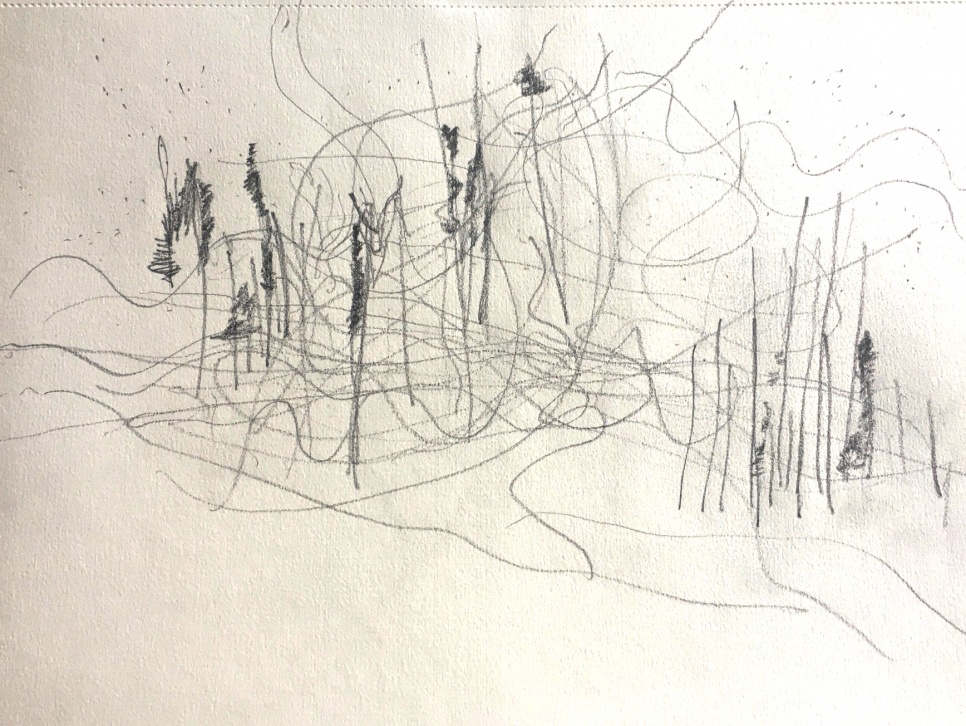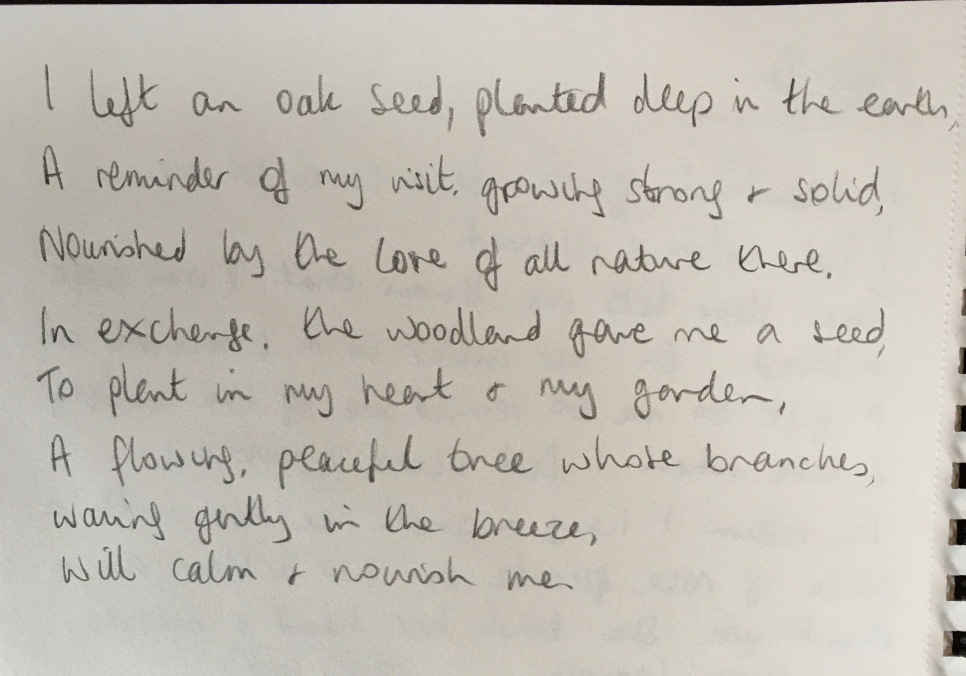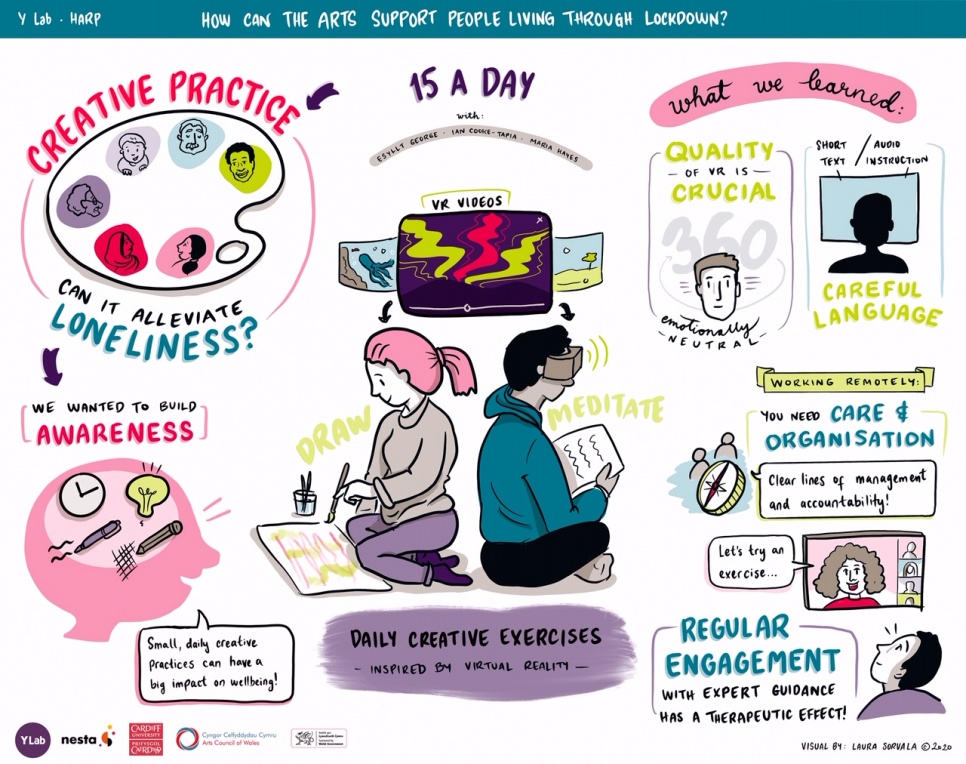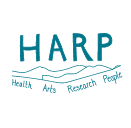Ian Cooke-Tapia, illustrator, Cooked Illustrations; Esyllt George - arts and health coordinator, Cwm Taf Morgannwg University Health Board; and Dr Maria Hayes, an independent artist facilitator.

Aim: To alleviate loneliness and improve wellbeing through a daily creative experience and practice.
Activity: Adults experiencing loneliness undertook seven days of creative activities (drawing and writing), 15 minutes a day, inspired by virtual reality videos that they watched via a Google Cardboard headset.
What need were you seeing in the world that motivated you to embark on the HARP Sprint?
We acknowledged that for people living alone in lockdown there could be a lot of internal ‘stuff’ going on without an external way to express those feelings and we thought about how that creates stress.
We acknowledged that many people experiencing loneliness had a pre-existing health condition and were isolated pre-lockdown, and once you ‘go in’ it can become harder to ‘get out’. This isolation can have a negative impact on wellbeing, which is difficult to replace with online connection. We thought about the paradox of being alone and being lonely - they can be very different things and moods can shift rapidly in this unprecedented situation.
We acknowledged that in the general culture wellbeing is often tied to exercise and not so much to creativity, despite research to acknowledge the positive role of creative activity for health and wellbeing. We considered the universal nature of ‘aloneness’ and the benefits of solitude for creativity.
What did you want your contribution to be? What were your goals?
We wanted to kickstart an awareness that small daily creative practices can have a big impact on wellbeing.
What did you do and why?
We used virtual reality experiences to inspire creative responses and widen horizons. We asked people to engage for 15 minutes a day for seven consecutive days.
Each day consisted of first watching a virtual reality video, from YouTube (so pre-existing) but carefully chosen by the team, including experiences under the sea, viewing the Northern Lights, space travelling and exploring a lion enclosure at a safari park. The participants were then asked to watch the video a second time whilst simultaneously responding with an observed drawing of the movement, or reflective writing. The exercises were created from the practitioners own creative practice: Maria draws movement and Esyllt devises creative therapeutic exercises that encourage responses through words and imagery.
All instructions were provided through daily emails, so there was no personal interaction between the participants or with the facilitators in terms of the creative activities. However arranging the logistics and supporting the set up (for example postage and assembly of the headsets) required individual email and telephone contact with participants. It was made clear to the participants that they were part of a group all participating the same week, so they knew they were not working completely independently and there was an impetus to complete the activities.

The virtual reality and creative experiences were designed to help participants be mindful and present, but also focus on something outside of themselves and their situation, as well as inspiring them to be creative. We asked the participants to push themselves creatively and gave them good quality art materials to work with (sketch books and pencils).
All participants created at least one outstanding artwork during the project and were represented in an online gallery (using Artsteps).

What did you learn?
We found that it’s important to be mindful and careful with language when setting written instructions, and to use shorter text based instructions OR record them to be listened to while watching the virtual reality videos.
The quality of VR videos and headsets is crucial; it’s important to choose videos that are emotionally neutral and 360 degrees (fully immersive). Individual preferences should be accounted for and established beforehand if possible.
Working remotely requires great care and organisation – more so than face to face. Co-delivering with a team you do not know requires more time than working face to face. Clear lines of management and accountability need to be set at the beginning.
Next time, we would also give clearer instructions on how to take good quality images of artwork.
What participants have got from this activity?
We learned that regular and expert guided engagement in the creative process has a therapeutic effect and contributes to resilience.
Once participants overcame an aversion to engaging with the technology they really enjoyed it and it provided new experiences for some people who had so far shunned online experiences.
Evaluation
All 10 participants participated at some point; nine participated for four out of the seven days.
All participants completed a bespoke wellbeing measure before and after the whole project, and before and after each daily exercise. Over the whole project all demonstrated improved mood as a result of participation; eight participants reported dramatic improvements in mood after participating. On a few days four participants reported feeling worse after participating. One participant said the immersive drawing was as effective as EMDR therapy for shifting her mood
Monitoring their wellbeing with the measure also seemed to have a therapeutic effect on participants in helping them to be more aware of their daily state.
- A full evaluation report by Maria Hayes can be accessed here: 15 a Day Evaluation Report (email) (1).pdf
- The Wellbeing Measure devised by Maria Hayes is now available for others to use, and Maria has produced a user guide here: The Wellbeing Measure - how to use (email).pdf. So far, several other organisations delivering arts and health activities have accessed the guide and are intending to use it to evaluate their projects.
Where will you go from here?
Esyllt: I will welcome new challenges and continue to explore the possibilities of creative expression for wellbeing through virtual reality in my work with the health board.
Maria: the creative process is in itself a healing and therapeutic engagement. Facilitated work that comes from the core of an artist's practice can have an amplified impact. While working with vulnerable people requires high levels of personal, creative and professional responsibility, it’s worth it.
Financial aspects
15 a day cost around £700 to deliver, including art materials and headsets for participants, postage and additional freelance costs for Ian to build the online gallery and Maria to complete the evaluation.
Ian and Maria both received grants of £1,000 each to participate in the HARP Sprint. Esyllt’s time was covered within her role at Cwm Taf Morgannwg University Health Board (funded by Arts Council of Wales).
This was originally published on Y Lab’s website in this format.

